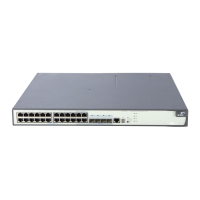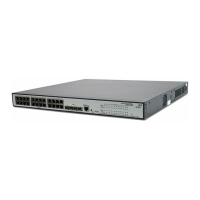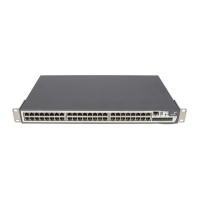1-4
Field Description
OperMau Current speed and duplex state of the port
Power port class
PoE device type, which can be :
z PSE, indicating a power supply device
z PD, indicating a powered device
PSE power supported
Indicates whether or not the device can operate as a
PSE.
PSE power enabled
Indicates whether or not the device is operating as a
PSE.
PSE pairs control ability
Indicates whether or not the PSE-PD pair control is
available.
Power pairs PoE mode, which can be Signal or Spare.
Port power classification
Port power classification of the PD, which can be:
z Class0
z Class1
z Class2
z Class3
z Class4
Link aggregation supported Indicates whether or not link aggregation is supported.
Link aggregation enabled Indicates whether or not link aggregation is enabled.
Aggregation port ID
Aggregation group ID, which is 0 if link aggregation is not
enabled.
Maximum frame Size Maximum frame size supported
MED information MED LLDP information
Media policy type
Media policy type, which can be:
z Voice, indicating the device is capable of processing
voice data.
z Unknown, indicating the media policy is unknown.
Unknown Policy Indicates whether or not the media policy is unknown.
VLAN tagged Indicates whether packets of the voice VLAN are tagged.
Media Policy VlanID ID of the voice VLAN
Media Policy L2 priority Layer 2 priority
Media Policy Dscp DSCP precedence
Location format
Location format, which can be:
z Civic Address LCI, indicating normal address
information.
z ECS ELIN, indicating telephone number for
urgencies.
Location Information Location information
PoE PSE power source
PSE type, which can be:
z Primary, indicating a primary power supply
z Backup, indicating a backup power supply

